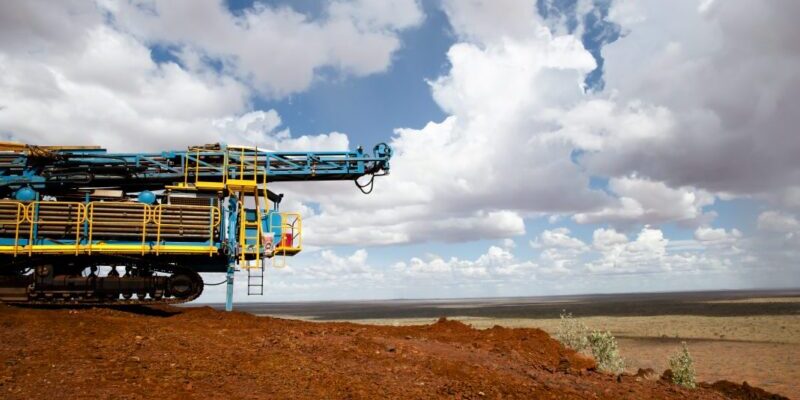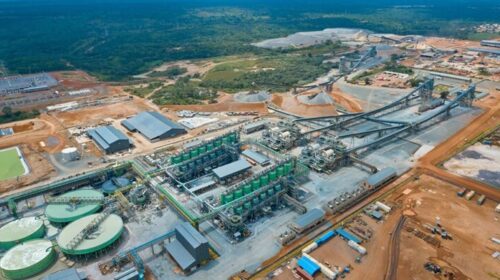Is Zambia really unattractive to mining investors?
Zambia was once again among the world’s five least attractive jurisdictions for mining investment – that is, according to the Fraser Institute’s latest Annual Survey of Mining Companies.
For members of Zambia’s Government, mining industry insiders, finance professionals – and anyone who follows the Canada-based think-tank’s annual report and saw our 2022 score – a return to the bottom five in this internationally-recognized report might seem like a bad joke.
The report is widely considered a global benchmark for investors’ perceptions and, for years, Mining For Zambia highlighted its findings with you, our readers.
But, with Zambia in position 58 out of the 62 jurisdictions surveyed in 2022 – when more investment flowed into the country than in the previous few years combined – something seems very off.
Mining For Zambia first began to question the utility of this annual survey when Zambia’s “investment attractiveness” was said to have shot up to position 51 out of 77 jurisdictions in the Fraser Institute’s 2020 report – despite years of uncompetitive mining policies, and no sign of investment. Now, having dug a bit deeper and engaged the authors, we would argue that Zambians have far less reason to worry than the pessimistic headlines pulled from this report would suggest. These are our reasons.
The sample size is tiny
In each of the last four surveys to include Zambia, only between five and nine responses on the country were successfully obtained.
In 2021, that number was less than five, so we were not included in the report at all. The responses on Zambia are slim to nothing, in other words, yet they are given the same weight – tallied up, with percentages assigned – as a jurisdiction that received, say, 50 responses. It is difficult to see how such a small number of respondents can be regarded as a representative sample.
We have no inkling who these respondents are
A total of 180 responses were received for the 2022 survey, a number which the Fraser Institute described as “providing sufficient data to evaluate 62 jurisdictions.” A pair of pie charts (Figure 1 and 2) show us “the position survey respondents hold in their company” and the “company focus”.
The charts illustrate, for instance, that 40.8% of global respondents are “president” of a company, while 8.3% categorized themselves “consultants”. The majority (42.1%) work in mining exploration companies, with “producer companies, “consulting companies” and “other” making up the rest.
Into which fields and positions do the five or six (or, at best nine) people who expressed their views about Zambia’s attractiveness as a mining investment destination fall?
We asked the authors to indicate how many responses on Zambia they received in the last three years, and to share (on an anonymized basis) these respondents’ “position” and “company focus”. They declined to do so.
Familiarity with a jurisdiction is another grey area. The Fraser Institute says the survey is designed “to capture the opinions of managers and executives about the level of investment barriers in jurisdictions with which their companies are familiar.” So how is “familiarity” determined or assessed?
It isn’t, they admitted. In other words, people’s knowledge about mineral potential and policy factors in each of the jurisdictions on which they choose to share their views (not limited to one) is self-reported.
They needn’t have ever worked or done business in the country, or made enquiries about how easy or difficult it is to apply for an exploration license or generate electricity for their operations, or any one of the criteria that are equated with “attractiveness” by the survey’s standards.
When statistics bear no resemblance to reality on the ground, exercise caution
With over a billion dollars’ worth of investments flowing into Zambia’s mining sector in the last 12 months – destined for new nickel mines, expansions of existing copper operations, and large scale mineral exploration projects – how could it be that this year, the Fraser Institute has reported that Zambia is less attractive to investors than in previous years when mining investment had dried up entirely?
The report has identified a trend that runs counter to reality on-the-ground, and in no way reflects the changes that have taken place in the last 12-18 months, since President Hichilema began demonstrating his Government’s commitment to a ‘new dawn’ for Zambia’s mining sector.
Zambia is among the bottom 10, but why?
Only on page 61 of this 80-page report does one find any information about the 15 very broadly-defined factors (ranging from “taxation regime” to “political stability” and a jurisdiction’s “geological database”) that survey respondents said either “encourages exploration investment” or is “not a deterrent to investment”. In the case of “political stability” in Zambia, a bar chart suggests that 38% of respondents selected one of the two options above.
The absence of a third option (“is a deterrent to investment”) is unexplained, and creates confusion. By its omission, should we assume that the remaining respondents (62%) think that “political (in)stability” (whatever that might mean to different people) deters investment in Zambia’s mining sector?
In short, the utility of the report is completely undermined by the way that it’s structured and, if the goal is to provide civil servants and policymakers with key information with which to brief ministers or design policies, the Fraser Institute’s latest Annual Survey of Mining Companies is not fit for purpose.
The problem, of course, is that there’s a big name behind this report, and it carries significant weight. Because it carries weight, the Fraser Institute has a responsibility to ensure what is being reported is easily understandable.
When one claims – without indicating to policy makers what needs to be improved, or highlighting anything in particular that is negative or negatively perceived – that Zambia is one of the world’s five least attractive destinations for mining investment, it has an absolutely outsized negative reputational impact.
And Zambia is not alone in having to deal with the consequences of a hollow report with an alarmingly small sample size. This year, 40% of the 62 jurisdictions included only received between five and nine survey responses.
Well-researched, well-structured surveys are welcome
It is important that surveys of this sort are conducted. But they have to be meritorious. They must be user-friendly, meaning that readers should not have to dig deep for the answers.
Surveys like this need to have a proper sample base, or the risk is they don’t reflect reality. And they should offer the jurisdictions surveyed clear guidance and sufficient detail on what is working and what is not, from investors’ perspectives.
Establishing relationships with each jurisdiction’s various chambers, minerals councils and mining associations would be a good start.
These organizations have a vested interest in ensuring that their membership participates in these surveys because that’s what will make them representative and insightful.
SOURCE:miningforzambia.com
59 total views , 1 views today





